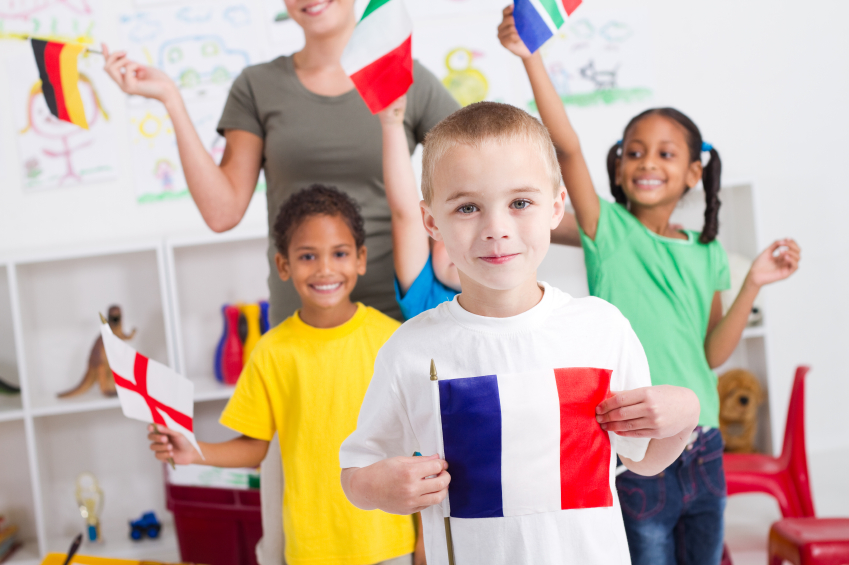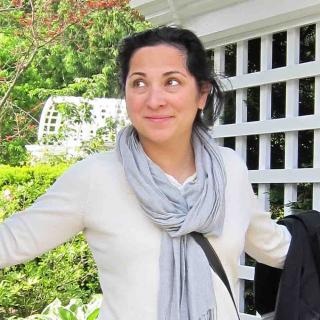
All parents wonder excitedly what their child’s first words will be — and then there are those who wonder in what language they’ll hear them. For some families, multilingualism helps keep cultural and ethnic heritage alive; others are drawn to the promise of personal and professional opportunities in the future. Either way, multilingualism has been proven to offer immediate cognitive advantages to kids and to help their brains work more efficiently.
Why language immersion?
“Around age 6 months, infants are capable of discriminating the sounds of all the languages of the world,” says Naja Ferjan Ramirez, Ph.D., outreach specialist for the Institute for Learning and Brain Sciences (I-LABS) at University of Washington.
In other words, babies are born with the potential to speak any language. But Ramirez also notes that at 12 months, the infant’s brain has begun to specialize and focus on the sounds of the primary language(s) she hears. (This concept is explored further in a language-learning study published in 2011 in the Journal of Phonetics.) Essentially, the earlier children are exposed to languages, the better their chances of retention and proficiency.
One of the best ways to impart another language, especially if it’s not already spoken in the home, is language-immersion learning. When they have direct access to native speakers and use a language in the context of social cues, young learners are most likely to be impacted long-term by the language. A 2003 study titled “Foreign-Language Experience in Infancy" describes children as young as 9 months showing significant phonetic learning from live exposure (as opposed to audio or audiovisual recordings), proving that language learning doesn’t require long-term listening, but rather social interaction and context. As a result, language-immersion preschool programs are becoming more and more popular across the country, and Seattle is no exception.
Types of immersion programs
Preschool language programs range from “complete” to “partial” to “two-way” and “one-way” immersion. In a complete immersion program, children are exposed to the foreign language 100 percent of the time.
There are variations such as partial immersion, where 50 percent of the time is spent in the foreign language. In some schools, there are two teachers per classroom who each speak a different non-English language exclusively, providing kids with a truly multilingual environment.
In a two-way program, making kids fluent in both English and the foreign language is the goal. But many preschool programs don’t do two-way immersion and teach only in a non-English language.
Spanish is the most common immersion language, according to Colin Wiggins, co-founder and co–executive director of Seattle’s EuropaKids International Preschool; French, German and Chinese are the other popular choices for parents in the Seattle metropolitan area.
If you are considering a language-immersion preschool program for your child, first evaluate it as you would any preschool. (Here are some general tips for that.) Wiggins then suggests carefully evaluating the foreign-language options, method of instruction (complete vs. partial, two-way vs. one-way), location, reputation and cost.
I-LABS’ Ramirez, who looked into language-immersion programs for her young son, adds that there are a lot of options for kids age 3 and older but not as much for the younger set. She recommends starting to research programs early, because there are often long waiting lists for the good ones. (If you’re interested in early foreign-language opportunities for babies and toddlers outside the home, check out multilingual story-time at the Seattle Public Library in Spanish, Mandarin, Somali and Vietnamese, or sign up for parent-child language classes such as Polly-Glot Tots.)
Learning for a lifetime
The last thing to keep in mind before rushing out to enroll your child in a language-immersion program is the commitment it requires. “This experience should not be treated as an extracurricular activity, but as a lifelong pursuit of learning,” Wiggins says. “The decision to embark upon this journey is one your entire family should make together.”
Language-immersion is a learning environment your child can take all the way through high school. As Lester and Humaira Jackson, who at one point had three children enrolled simultaneously in Bellevue School District’s Spanish Immersion Program, explain, "You need to be committed to allowing your children to learn independently of your direct guidance. Parents who don't speak the language can’t help with homework in the same way.” But they saw the decision to enroll their children in language immersion as a “gift” that opened up access to other cultures, travel and independence.
Long-term language immersion is a significant commitment to the pursuit of multilingualism, and it may not be possible for every family or child. But there is no disputing the tremendous benefits of learning another language, regardless of proficiency level — so the earlier the exposure and the more human interaction, the better.
The benefits of bilingualism
 ● Better understanding of one’s primary language, because learning a new tongue teases out similarities and differences between the primary language and others (per the 2000 handbook Dual Language Instruction).
● Better understanding of one’s primary language, because learning a new tongue teases out similarities and differences between the primary language and others (per the 2000 handbook Dual Language Instruction).
● Brain activity tests described in a New York Times article from 2011 show that bilinguals have a heightened ability over monolinguals to monitor their immediate environment and keep track of what’s going on more efficiently.
● A 2008 study published in Applied Developmental Science supports evidence that a bilingual child’s ability to operate between two languages strengthens mental flexibility, self-control/self-regulation and the ease of switching between mental tasks.
● And, according to a 2013 study published in Neurology, bilingualism may even delay the onset of dementia in old age by as many as five years.
Then there are the less measurable but equally valuable advantages of bilingualism, such as a more nuanced understanding of how to communicate, sharpened problem-solving and enhanced appreciation of people and cultures from other parts of the world.
Spanish-English bilingual babies are needed for a language study at University of Washington. The Institute for Learning and Brain Sciences (I-LABS) is studying how infants perceive speech sounds and then represent these sounds in their brains. We are looking for children between 4 and 14 months old who hear English and Spanish at home and/or at school. The study will involve one to three visits to the UW campus, each lasting about an hour, when the child is between 11 and 14 months old. Eligible subjects will receive up to $115 for participating. Parking/transportation costs are reimbursed, or transportation will be provided upon request. Childcare is available for other children. If you are interested, please contact I-LABS at 206-616-6221 or email kuhllab@u.washington.edu. (Please remember that we cannot guarantee the confidentiality of any information sent by email.)











